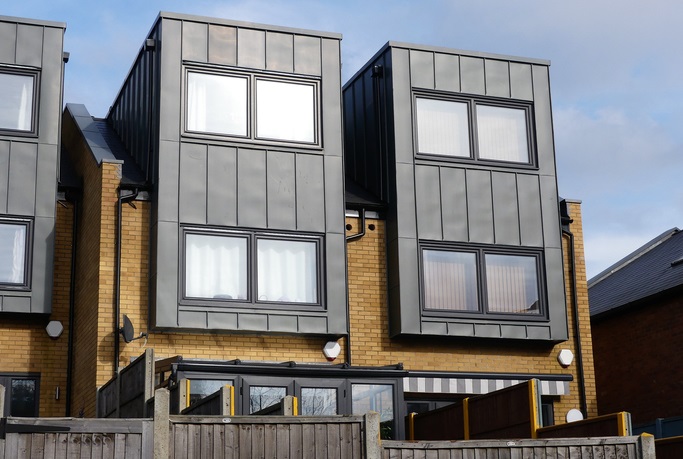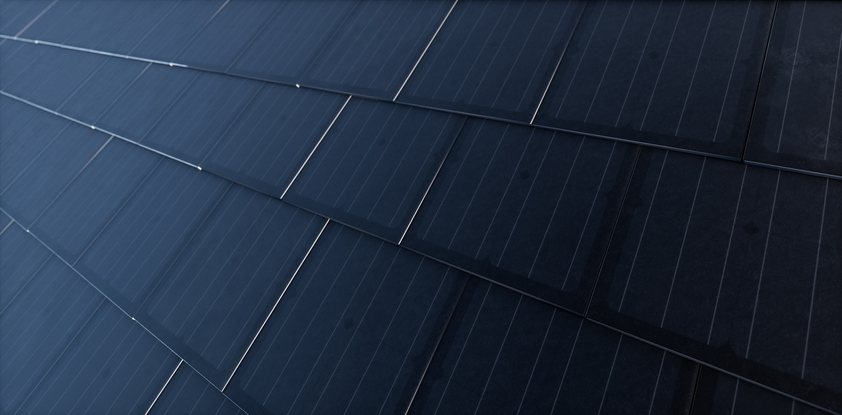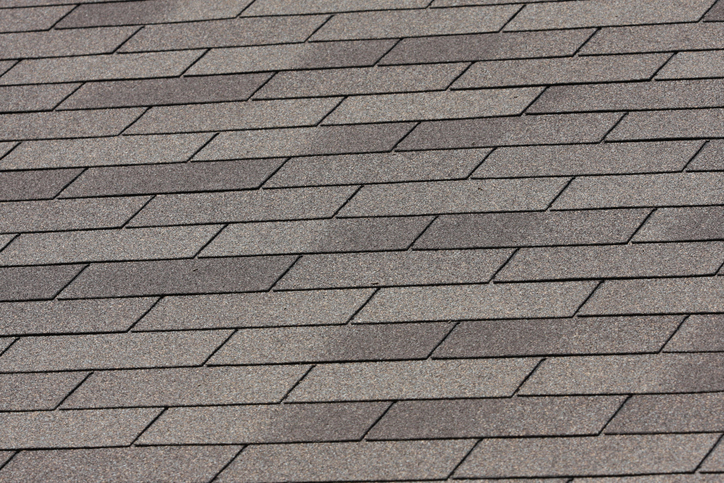Roofing Techniques: Top Roofing Materials & Methods
Reading time: 7 minutes
Types of roofing materials
There are several important factors when choosing a roof. These include how long the roof will last, its cost, its appearance, and how difficult it will be to install.
Here are some of the different types of roofing materials you can choose from:
Metal roofing
Metal roofs used to be found mostly in factories and other large buildings. Now, metal roofs are becoming more popular for homes. This is because they are better protected from fire and harsh weather.
Metal roofs can be made from sheets of steel, aluminium or copper. They are attached to a strong base of plywood or wood. To prevent rust and damage, metal roofs have special coatings.
With proper care, a metal roof can last for 50 years or more. One disadvantage of metal roofs is that they can make rain sound very loud inside the home.

Steel roofing
Steel is one of the more affordable types of metal roofing. It can be made to look like many different materials and comes in various colours and textures.
Steel roofing is often made with special mixes of metals, such as zinc, aluminium and ceramic. This helps protect the steel from rusting.
A steel roof can last approximately 60 to 70 years without needing replacement. Like metal roofs, steel roofs can be noisy when it rains or hails.
Solar tiles
Solar tiles are a newer type of roofing material. Instead of having large solar panels on the roof, solar tiles have solar cells built right into them. This makes them look better on homes and can be easier to install.
Solar tiles need to face the sun to work well, such as on a south-facing roof. It is important to note that they cost more and make less electricity than traditional solar panels.

Asphalt shingles
Asphalt shingles are the most common type of roofing material. They are affordable and easy to find. Asphalt shingles are made from fibreglass covered in asphalt and small stones. They protect homes from rain and allow air to move through the roof.
Asphalt shingles are lightweight and have a smooth surface. This helps ice and other things slide off easily. When installed correctly, asphalt shingles can last 30 to 50 years. They can, however, be damaged by hail and strong winds. It's important to check the roof regularly to ensure it's in good condition.

Rubber slates
If the owner wants a strong roofing material that looks like old-fashioned slate, rubber slates are a good choice. Rubber slates are often made from recycled tires or a special kind of plastic. They can be installed easily and work well in all kinds of weather. They're very strong and it's said they can last for up to 150 years. It's easy to walk on them without breaking them too.
Slate tiles
Natural slate tiles are made from a natural rock called slate. Slate is very strong and can withstand rain, wind, and other harsh weather.
Slate tiles are made by splitting slate rock into thin sheets. They often have a beautiful blue-grey colour. Slate roofs can last over 150 years, making them last longer than most roofing materials.
They can be expensive but don't need to be replaced often. These tiles can break easily, so you'll have to be careful when working with them.
Clay and concrete tiles
Concrete and clay tiles look like traditional red clay tiles but are much stronger. Concrete roof tiles are made from cement, sand and water.
On the other hand, clay tiles are made from clay that has been baked to make them hard. Both clay and concrete tiles can withstand strong winds, fire, and heavy rain.

Traditional roofing techniques
In the past, roofs were built using materials that were easy to find in the local area. These materials also had to be strong enough to protect the house from the weather.
Over the years, people developed special ways to build roofs that worked well in their part of the world. It's helpful to understand these traditional ways of building roofs, even though we have many new types of roofing today.
Thatch roofing
Thatch roofs are made from dried plants like straw, reeds, or grasses. The plants are tied together in bundles and then stacked in layers. Thatched roofs are still common in some places, like rural areas and villages.
These roofs are waterproof when they are built correctly. They are also very good at keeping houses warm or cool. Skilled thatchers pass their knowledge down through many generations.
Sod roofing
Sod is a layer of grass and the dirt that it grows in. Sod roofs are made by stacking pieces of turf on top of each other. They have been used for a very long time in northern Europe. You can still find sod roofs in countries like Norway and Sweden.
Sod roofs are also waterproof when built properly. They keep buildings warm in the winter because they hold air inside.
You have to build sod roofs to allow water to drain off them easily. Otherwise, the sod can rot or start to move.
Clay tiles
The Romans were experts at building roofs with clay tiles. They shaped wet clay into tiles and baked them to make them hard. Clay tiles were often curved and had ways to connect to each other so they could overlap on a roof.
These roofs are still quite common and often have a reddish-brown colour and a beautifully curved shape. They are a good choice because they don't burn easily and let air flow through the roof.
Roofing design considerations
There are many things to think about when designing a new roof. A good roof will last long, protect the building from the weather, and look nice.
Pitch and slope
The pitch of the roof is how steep it is. A steeper roof helps water and snow runoff. Make sure the roof is steep enough to keep water from leaking into the building. The pitch also needs to match the style of the building.
Materials selection
When picking the roof materials for a building project, you should consider things like wind, fire, and snow. Also, some materials are better for the environment than others. For example, fibreglass and GRP roofing systems help with energy efficiency.
Structure integration
The roof needs to be designed to work well with the rest of the building. This includes things like the beams that hold the roof up, the insulation, and the waterproof materials.
It also needs to work with the other parts of the building, like the electrical wiring, heating and cooling, and plumbing.
Aesthetic cohesion
As a construction professional, you'll have to think about the shape of the roof and any special features. These include the windows, chimneys or skylights when you are designing it.
Roof maintenance and repair techniques
Taking care of a roof will save money over time. As a professional, you should advise the owner to clean the gutters twice a year. When gutters get clogged, water can overflow and damage the roof and other parts of the building.
After a storm, they can check the roof for missing or broken shingles or tiles. It's important to fix small problems with the roof right away before they can cause major damage.
Common fixes Include:
-
Fixing blisters in asphalt roofs with a trowel and patching material
-
Replacing cracked or missing shingles or tiles
-
Repairing damaged waterproof membranes
-
Put a protective coating on roofing materials that are starting to wear out
Roof edges often get damaged by wind, which can lift tiles or break loose the material that holds them together. Signs of this kind of damage include stains on the ceilings or sagging gutters.
To fix this problem, put the tiles back in place with fresh mortar and add wire to hold them down. Seal any cracks and repaint.
Sometimes, a roof will need major repairs or even need to be replaced. This might be necessary if the roof leaks a lot, the wood underneath is rotting, or if there are large areas where water collects. With good care, a well-made roof can last for many years.
You could also read our post about Dry verge: problems and how to fix them.
Innovative roofing technologies
Modern roofing technology has made great advances. There are now special kinds of roofs that can help lower your energy bills, generate electricity, or even have plants growing on them.
Cool roofs have a special coating that reflects sunlight, so they don't get as hot. This can make the inside of the building much cooler. Skylights are a similar idea, letting in natural light so they don't have to use electric lights as much.
Solar shingles are a new type of roofing material that has solar cells built right in. This means the roof can generate electricity from sunlight.
There are also green roofs covered with plants. They need a special waterproof base and drainage system to keep the plants healthy. Green roofs are good for the environment because they help insulate the house, filter rainwater, and clean the air.
Clearly, roofing technology is changing all the time. Roofs can now do many more things than just keep the rain out. Also, you can read this article on Understanding roof windows.
Disclaimer: The information contained on this page is intended as an overall introduction and is not intended as specific advice from a qualified professional. Travis Perkins aims to avoid, but accepts no liability, in the case that any information stated is out of date.





